#manifesto antropofago
Explore tagged Tumblr posts
Text
Só a antropofagia nos une. Socialmente. Economicamente. Filosoficamente.
Manifesto Antropófago.
4 notes
·
View notes
Text
Anna Maria Maiolino
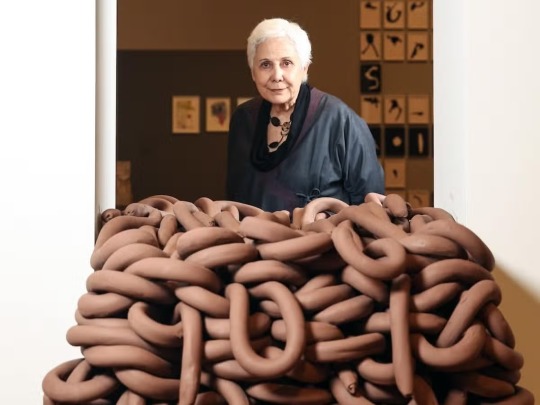
“Fortunatamente per mezzo dell’arte possiamo sovvertire repressioni e conflitti. Sovvertire nel senso di porre rimedio alle repressioni cercando di realizzare un’arte anticonformista e di intervento politico, e perciò rivoluzionaria, che renda possibile recuperare ciò che il nostro spirito ha di fondamentale: la dignità. Grazie all’arte ho potuto consegnare un posto nel mondo ai miei sentimenti.”
Anna Maria Maiolino è l’artista brasiliana di origine italiana insignita del Leone d’Oro alla carriera della Biennale di Venezia del 2024, insieme a Nil Yalter.
Nel corso della sua lunga carriera si è cimentata con ogni mezzo espressivo: pittura, incisione, scultura, poesia, fotografia, video e performance.
Sin dagli anni Sessanta, si ispira alla quotidianità femminile per opporre uno sbarramento all’egemonia maschile e a temi come la fame, la povertà, l’ingiustizia. Il suo percorso artistico è un viaggio verso la riappropriazione di un posto nel mondo.
È nata il 20 maggio 1942 a Scalea, in Italia, per poi emigrare con la famiglia a Caracas, nel 1954, ai tempi il Venezuela pagava il biglietto del viaggio in nave alle persone che migravano dall’Italia. Sin da piccola, disegnare aveva rappresentato, per lei, un rifugio e un conforto a una realtà estranea, aiutandola ad allontanare i ricordi di un’infanzia difficile, trascorsa durante gli anni più duri della guerra. Ha studiato alla Escuela de Artes Visuales Cristóbal Rojas fino al loro trasferimento a Rio de Janeiro, nel 1960, dove ha frequentato la Escola Nacional de Belas Artes. Aveva diciotto anni quando ha esposto per la prima volta, al XXI Salón Oficial de Arte Venezolano.
Dal 1967 è stata coinvolta nel movimento della Nova Figuração, che metteva in primo piano la partecipazione attiva del pubblico fruitore e un impegno e una posizione sui problemi politici, sociali ed etici.
Ha partecipato alla mostra Nova Objetividade Brasileira, al Museo d’Arte Moderna e le sue opere sono diventate un manifesto della resistenza al regime, così come delle crescenti disuguaglianze sociali del paese.
In quegli anni ha cominciato a occuparsi di disuguaglianze di genere sul duplice versante corporale e intimistico-spirituale.
I suoi dipinti e incisioni degli anni Sessanta sono piuttosto radicali, combinano l’immaginario pop con il repertorio tipico della Nova Figuração, concentrandosi su personaggi e narrazioni politiche, oltre che su riferimenti personali, corporei e familiari.
Si è sperimentata con tecniche appartenenti alla cultura popolare come i cordels, xilografie accompagnate da brevi poesie o filastrocche d’intrattenimento, come strumento di denuncia sociale.
Questo tipo di rappresentazioni erano ispirate dal Manifesto Antropofago di Oswald de Andrade in cui, l’immagine dell’indigeno cannibale, riportata nei resoconti dei colonizzatori, veniva utilizzata per contrapporre alla cultura europea un’identità completamente diversa, antagonistica, quasi spaventosa, che potesse liberare definitivamente il Brasile da secoli di sudditanza politica e culturale. Una contrapposizione alla politica del regime, sempre più repressiva e autoritaria, un’arte popolare, kitsch e associata spesso al “cattivo gusto”. In questo clima politico e culturale piuttosto intricato, ha dato vita a opere come Anna e Glu Glu Glu, entrambe del 1967.
Nel 1968 si è trasferita a New York grazie a una borsa di studio al The Pratt Graphics Center dove ha avuto modo di praticare la tecnica di incisione su metallo, acquaforte, allargando i propri orizzonti artistici.
In questi anni scrivere poesie è stata la sua modalità espressiva primaria e al suo ritorno in Brasile, alla fine del 1971, ha iniziato a creare disegni e composizioni basate su di esse (“Mapas Mentais”, 1971-74; “Book Objects”, 1971-76; “Drawing Objects”, 1971-76).
L’interazione performativa tra gli oggetti d’arte e il pubblico sono il nodo centrale del suo lavoro.
Anche il suo primo film realizzato nel 1973, In-Out (Antropofagia), dimostra lo stretto legame con il pensiero antropofagico. Nel video l’inquadratura è fissa sulla bocca dei personaggi ed è talmente stretta che a malapena sono visibili il naso e il mento. Un uomo e una donna che tentano di parlare, senza riuscirci: dalle loro bocche spalancate e in continuo movimento non esce alcun suono, talvolta sono bloccati, prima da una striscia di nastro adesivo nero, poi da un uovo e da sempre più numerosi fili di tessuto.
L’impossibilità di esprimersi è un’aperta denuncia della censura in atto nel Brasile di quegli anni. L’assenza di parole e la loro sostituzione con un respiro affannato fanno riferimento al sofoco (soffocamento), con cui ci si riferiva agli anni più duri della repressione della dittatura militare. Un oggetto che compare per la prima volta proprio in In-Out (Antropofagia) e che diventerà fondamentale nell’iconografia di Anna Maria Maiolino è l’uovo.
Nel 1981 ha messo in scena Entrevidas, in cui decine di uova sono sparse sul pavimento e sfidano l’artista a percorrere lo spazio come fosse un campo minato, tenendo conto della fragilità e della precarietà dell’uovo, simbolo della vita stessa.
Una delle sue opere più celebri è Por un fio del 1976 dove l‘artista è seduta tra sua madre e sua figlia nell’atto di tenere in bocca segmenti di corda, come a voler enfatizzare i legami familiari. Il suo linguaggio ci parla di un legame, profondamente femminile, ed estremamente fiero e coraggioso nell’affrontare i divieti e le violenze maschili.
Nel 1989 ha iniziato a lavorare con l’argilla per la serie Modeled Earth, con una nuova attenzione per l’espressione gestuale e sensoriale, un rituale che richiama una radice profonda, un tassello della sua identità. Ha poi sperimentato con cemento e gesso, realizzando grandi sculture murali.
Il lavoro manuale, il rapporto con la terra, i materiali elementari in sculture e rilievi, continuano ancora a oggi a far parte della sua attività creativa. Un’azione ripetitiva e banale che si fa pratica artistica.
La carta, più di una superficie su cui disegnare, è diventata materia e corpo, la serie Indicios è, infatti, composta da disegni realizzati su carta con ago e filo, con l’intento di denunciare la meccanicità di gesti quotidiani appartenenti alla sfera domestica femminile come cucire.
Un momento di svolta nella sua carriera artistica è stata la partecipazione all’esposizione Inside the Visible a Boston, nel 1996, composta da trenta artiste fra cui Louise Bourgeois, Mona Hatoum, Carol Rama, Charlotte Salomon, Cecilia Vicuña, per citarne qualcuna. Sulla copertina del catalogo c’era un’immagine della sua performance Entrevidas, che l’ha fatta conoscere a un più ampio pubblico.
Per la prima volta alla Biennale Arte di Venezia, nel 2024, Anna Maria Maiolino ha esposto una nuova opera di grandi dimensioni che prosegue e sviluppa la serie delle sue sculture e installazioni in argilla. Un lavoro che indaga i rapporti umani, le difficoltà comunicative e di espressione, percorrendo il labile confine tra fisicità e sfera intima e spirituale.
Oggi vive e lavora a San Paolo, in Brasile. Ha esposto nei principali musei di arte moderna e contemporanea del mondo.
0 notes
Photo

#manifesto antropofago#oswald de andrade#modernismo#movimento modernista#semana de arte moderna#1922#tarsila do amaral#tarsiladoamaral#abapuru#tropicália
161 notes
·
View notes
Text
Os Mutantes – Os Mutantes
Os Mutantes – Os Mutantes
Con gli Os Mutantes immagino abbiate già preso confidenza; ma per darvi ulteriore dimensione del loro spessore (se ne aveste bisogno e non vi fidaste delle parole da me già spese), hanno goduto della stima di David Byrne e Kurt Cobain, e trovo che si siano dimostrati l’ingranaggio essenziale del tropicalismo. Gli Os Mutantes probabilmente hanno incarnato nel migliore dei modi i valori del…

View On WordPress
#A Minha Menina#Adeus Maria Fulô#Arnaldo Baptista#Baby#Bat Macumba#David Byrne#Festival della Canzone#Françoise Hardy#Gilberto Gil#John Phillips#Jorge Ben Jor#Kurt Cobain#Le Premier Bonheur du Jour#Mamas and Papas#Manifesto Antropofago#Olivier Perroy#Once Was a Time I Thought#Os Mutantes#Oswald de Andrade#Pink Floyd#Rita Lee#Sergio Dias#Sgt. Pepper&039;s Lonely Hearts Club Band#Sivuca#Syd Barrett#Tempo no Tempo#Tropicalia: ou Panis et Circencis#Vashti Bunyan
7 notes
·
View notes
Text
Exploring Brazilian Culture!
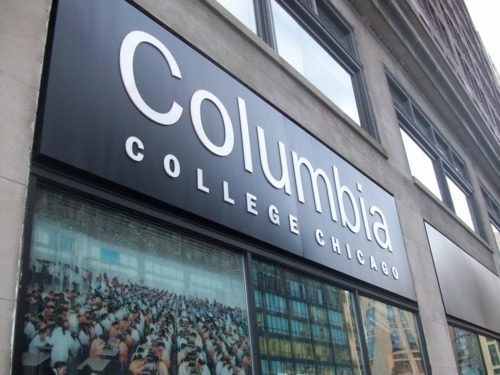
Below excerpts represent a virtual study of Brazilian culture by Columbia College Chicago (CCC) undergraduate students enrolled in the Humanities, History and Social Science (HHSS) Dept. online course: HUMA121 “Latin American Art, Literature and Music” .
This virtual showing on tumblr is hosted by CCC students enrolled in this HHSS Dept. course with its instructor, Jesus Macarena Avila. This investigation began with a study on Tarsila do Amaral and her involvement with the cultural movement: Antropofagia.
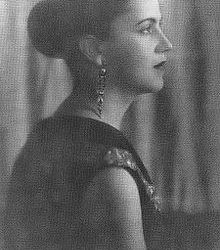
Amaral with creative intellectuals like Oswald de Andrade and Anita Malfatti advocated a new ideology, the Manifesto Antropofago.
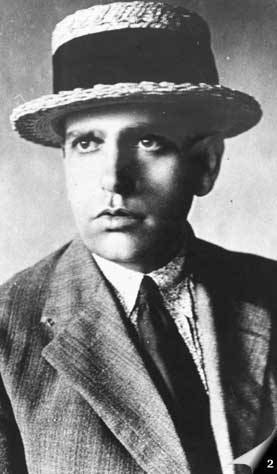
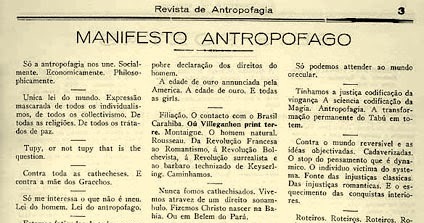
This investigation was only enhanced by the course's online contributors and guests: Dr. Roberto J. Tejada and Ariani Friedl. Dr. Tejada's expertise of Latin American art history and knowledge on Amaral's cultural production.

Dr. Tejada gave cultural and historic interpretations of Amaral's paintings like "Carnaval em Madureira" (1924, oil on canvas, 76 × 63.5 cm) showing the Afro Brazilian influence on the work.

Below are students' comments on what was learnt from Dr. Tejada's lecture:
"The speaker Dr. Roberto J. Tejada did an amazing job really helping me comprehend what was going on, and the different and creative ways with the European side and the afro American side were trying to solidify the culture and understanding of one another’s history."
"Amaral is also well known for creating the work of 'Anthropofagia', according to Dr. Tejada, in which its 'main intention was to create a mythic space in a language of painting through using bold colors and unusual forms, in order to create a vision specific to Brazilian history and attending to contemporary human geography/landscapes'."
"Dr. Tejada gave a great explanation of Amaral’s painting Anthropofagia. Made in 1929, its intention was to create a mythic space in painting using non-contemporary forms and vanguard themes to connect to Brazil's history of violent colonialism."
"Some background information about that Dr. Tejada touches on the fact where many Brazilians might have come from. The government encouraged immigration for the most part from Europe. Around the year 1888, the population contained many white Brazilians but also as well many black Brazilians.
Brazil was also one of the last countries in Latin America to abolish slavery. So even from then on racism was something that was influencing many policies (specifically Immigration policies), systems created in Brazil, etc."
"Dr. Tejada made a good point when he stated 'the word itself, signifies the Tupi language and enhancement, it seems to serve the undeniable presence of indigenous people. The indigenous culture is elevated and given importance just as any other subject European painters would put forward’."

And Ariani Friedl (above) representing Chicago's annual cinematic program: Mostra Brazilian Film Series gave an insight to this year's film programming.
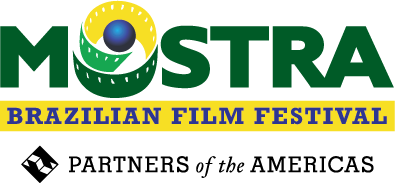
Friedl was recently interviewed by Illinois Latino Voice's TransLatinx artist, Jesus "Jesse" Iniguez, this is an excerpt:
Jesus "Jesse" Iniguez: Due to the national Shelter in Place order, how has Mostra become more accessible to a wider audience this year?
Arian Friedl: Due to the pandemic and the impossibility for us to have a MOSTRA in person, we decided, as many other organizations, to present our MOSTRA XI virtually. This has been a completely new field for us and we have had to learn a great deal of new techniques and ways of doing a festival.
JJI: As with previous festivals, What film(s) are this year’s highlights? What are the themes or concepts being featured for Mostra Brazilian Film Festival 2020?
AF: As you know, MOSTRA present Brazilian films with social conscience and every year we bring films which address different aspects of Brazilian culture, environment, social issues, history and others. This year we will be featuring films related to our political history, environment, gender and race issues and others.
JJI: Thank you so much for your time during our “new normal”. You can find Mostra’s film listings on their official website: http://mostrafilmfestival.org/xi/

Below are student/instructor film review excerpts:

"Amazônia, o Despertar da Florestania", Dirs: Christiane Torloni & Miguel Przewodowski, Documentary/1h 46min/2018 (Portuguese w English Subtitles)

"How has Brazil dealt with nature and its natural resources in the early 20th century? What state is the Amazon Forest in? Based on interviews with specialists from the most diverse areas and the rescue of historical figures, the notion of forestry is discussed: the citizenship of the forest, a term necessary to reflect on Brazilian identity.
Although dramatic, sometimes bordering on desperate romanticism, the questions raised by the documentary Amazônia, the Awakening of Forestry are treated with the necessary urgency and a very welcoming tone by the actress, environmental activist, and now even filmmaker Christiane Torloni.
In her directorial debut, Torloni accesses something profound, mystical, and sacred, but no less concrete or vivacious: the surreal power of the Amazon rainforest – and the risk of its disappearance.A documentary film of a conventional format like this only works with the cast's quality and constitution.
A movie like this is only as good as the level of testimony it collects and makes available to the viewer. Fortunately, there are media personalities of weight, prestige, and intelligence, from the fields of art to sciences. All are coming together to trace and unravel the devastating panorama in which we find ourselves as a society." -- E. Reynaga
View trailer here: https://m.youtube.com/watch?v=0Dvm-VH1L8k

"Açúcar", Dirs. Renata Pinheiro & Sérgio Oliveira, Fiction/1h 30min/2020 (Portuguese w English Subtitles)
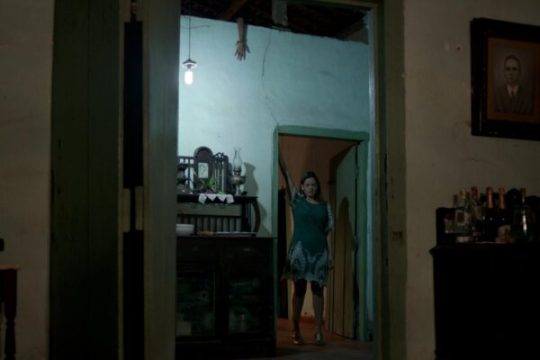
"Açúcar is a surreal but haunting portrait of an aging sugar cane plantation. It centers on the main character, Bethânia Wanderley (played by Maeve Jinkings), a last remaining family member of a historic Brazilian plantation family. She tries to repair the old mansion and thinking of new crops to revive the plantation industry.
Although this is a fictional tale, it does reference actual facts about slavery in Brazil (being the last Latin American country to abolish slave ownership). As the story progresses, Bethânia begins to see or "hallucinate" things around the old mansion, is it the Wanderley's past with slavery? Or is it the local people, descendants of slaves plotting to get the aging land back? Is it this about “revenge” or reclaiming human rights?
It's beautifully photographed against a sugar cane landscape referencing Afro Brazilian beliefs in Orixas and body possession. Directors Renata Pinheiro and Sérgio Oliveira has won awards for their own films and this feature is a collaborative work at re-looking Brazil's slavery and the history of plantation families." -- J. Macarena Avila
View trailer here: https://m.youtube.com/watch?v=rQBfzNZMags
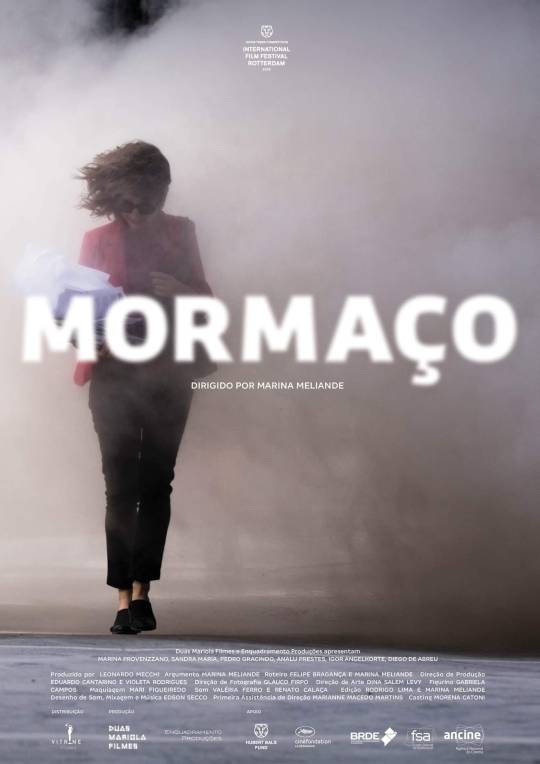
”Mormaço", Dir: Marina Meliande, Political Drama/1h 36min/ 2018 (Portuguese w English Subtitles)

"Mormaço combines different genres, fantasy, political, drama, etc. using visuals to make social commentary about 2016 Rio de Janiero's Olympics. That year, many resident areas were displaced to create attractions for tourism for the Olympics.
This feature is a dazzling, but slow burner story using different genres based on true events surrounding the 2016 Olympics when one of the hottest summers faced Rio de Janiero's area.
It centers on a public lawyer, Ana representing residents being threaten to move. The residents have regular meetings with Ana to prepare to lobby against the city government. Then Ana develops a unknown medical condition that starts a metaphorsis that only complicates her life." -- J. Macarena Avila
"After viewing the film I did some research and learned from an article titled 'Film Mormaço Interweaves Fiction and Reality to Retell Story of Vila Autódromo Evictions' that these events in the film are based on historical events that actually occurred.
The article also states that Mormaço 'makes use of actual footage of these events.' Many of the scenes illustrating war and protest are primary sources that I found very interesting.
Knowing this about the film made me want to watch it a second time to catch all of these primary footages. Mostly because of how seamless the transition from historical footage to current footage. Overall, I felt the film was not only entertaining but also informational." -- J. Heflin
View trailer here: https://m.youtube.com/watch?v=FwSanEqppds
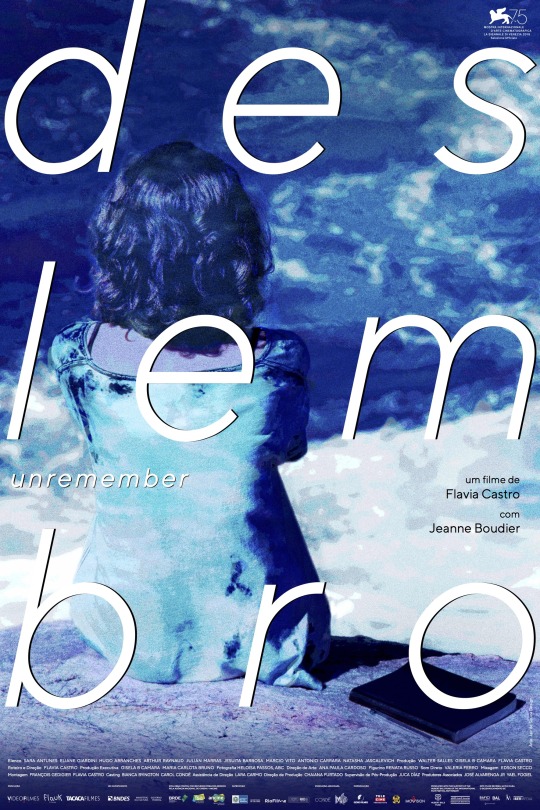
"Deslembro", Dir: Flávia Castro, Drama /1h 36min / 2018 (Portuguese w English Subtitles)

"Quickly summarizing this movie, it’s about a girl named Joanna, who lives with her mom, stepfather, and two stepbrothers in Paris. Her parents announce that they would be moving the family to Brazil and it is very clear at the beginning of the movie how Joanna feels about the decision. Of course, the move is inevitable and the rest of the movie is located in Brazil.
The move to Brazil allows Joanna to be able to explore new things, like the world of literature, her first love, and she awakens politically. Being in Brazil seems to bring up a whole bunch of old disturbing memories from Joanna’s childhood that have something to do with her fathers’ disappearance which then leads Joanna to have a slight hope that her father may be alive.
Leaving this paragraph on a cliff hanger just in case anyone ends up wanting to watch it. I believe that this was a very well written and portrayed movie. It caught my interest because it just seemed relatable. Something realistic, unlike this other movie that I was interested in watching which seemed more fiction based." -- Y. Contreras
View trailer here: https://m.youtube.com/watch?v=4qFP5cbmyEg
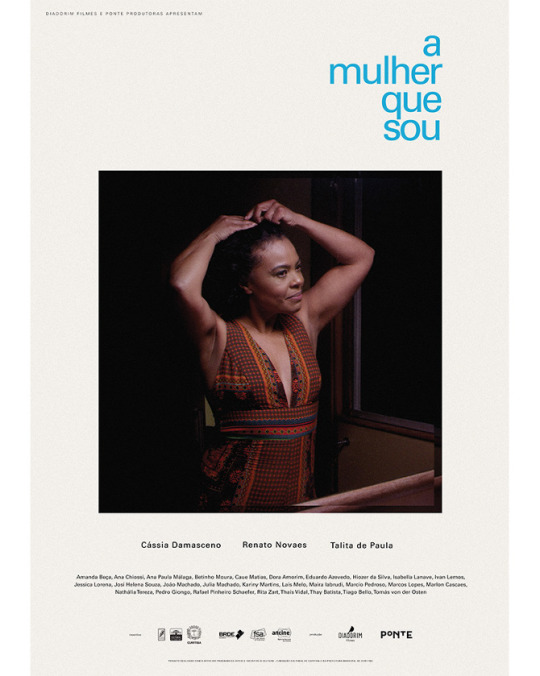
"Mulher Que Sou" (15m), Dir: Nathalia Thereza (Portuguese w English Subtitles)

"The film 'The Woman Who I Am' follows a single mother who is in search of a new beginning away from what appears to be the rural lifestyle she once lived. We immediately begin the story following our main character, Marta, who is traveling alongside a mountain by bus before abruptly switching to a highway where she continues her travel into the city. Later, as she is searching for apartments we are introduced to her daughter who she consults with during this process.
This establishes for the audience their relationship with one another but also theimportance of and emphasis placed on the value of listening to her daughter and including her in this journey. While the prevailing theme of this film, I contend, was identity, we also can identify themes of femininity, single motherhood, modernity, and beauty all woven into the dynamic of Marta’s character.
These intersections help us to understand and even challenge the ways in which we often place mothers in society, especially those that are single or value women past a certain age, questioning their worthiness to be called beautiful" -- G. Paredes
"Oddly enough, the Woman I am was probably my least favorite out of all the films I watched at Mostra. Don’t get me wrong I still enjoyed the film and thought it was pretty good, but it had a lot of potentials that was wasted. There were scenes where the dialogue was too rushed and others where nothing was happening for a particularly long time.
One thing I don’t like is that they didn’t show you some things. For example, the characters would be talking about something off-screen, and the way they were talking about it, you would think it would be some, what of a big deal. They didn’t show the thing in that scene and I thought they were leaving it to be some sort of reveal later on in the film.
But it never gets mentioned again and the audience never gets to see what the characters were talking about. In my opinion, it would’ve been fine not to show it if it was a quick mention but the character made it seemed like it was kinda important.
A reason I did like the film’s 'secretness' is that it captured what the film was supposed to be about: a mom and daughter moving on from their past to a new beginning." -- K. Williams
View this short here: https://m.youtube.com/watch?v=05-F8PDvxdY
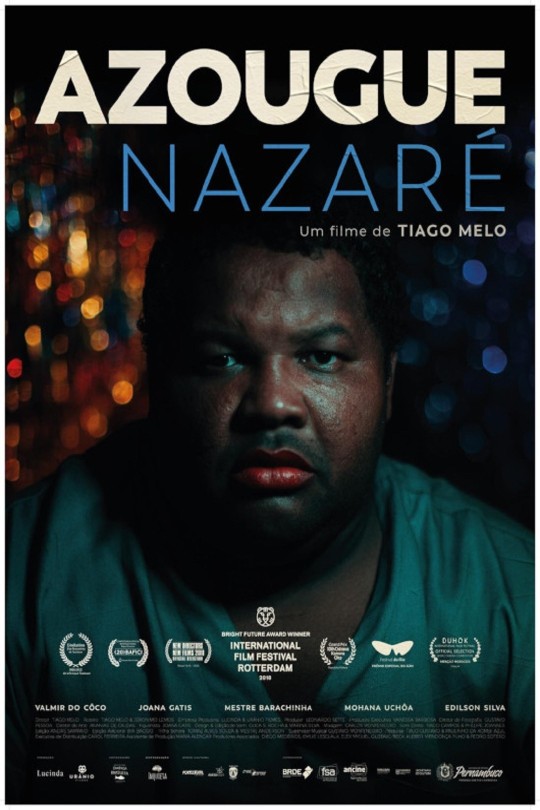
"Azougue Nazaré", Dir: Tiago Melo, Fiction/1h 22min/2018 (Portuguese w English Subtitles)
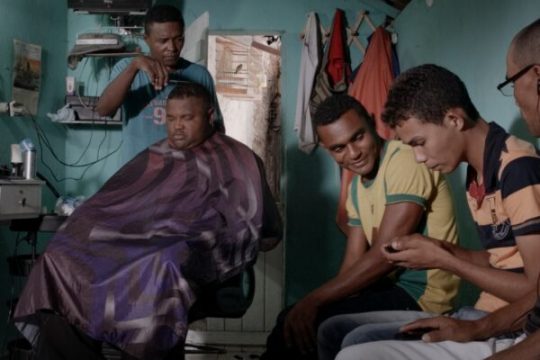
"The film Azougue Nazaré was a drama film released in 2018 directed and written by Tiago Melo. The film is about the start of a new destructive supernatural phenomenon and different spiritual ideologies that collide within this community.
The film touches on religious topics and events in Latin American and was very informational and entertaining. I felt that this film was well put together and although I was not used to many of the different rituals and traditions are shown in the film.
It was very easy to follow along and even relate some of these traditions to ones in my culture. I usually would never go for a film that has to do with religious topics but the film’s artistic values and images caught my eye." - J. Heflin
View trailer here: https://m.youtube.com/watch?v=NFxE51n0IQo

"Quebramar", (27m), Dir: Cris Lyra (Portuguese w English Subtitles)

"Going off of Mostra Festival’s description of the film, Breakwater (Quebramar) is a movie about a group of girls from São Paulo who takes a vacation to a remote island for the New Years. While on this vacation, the girls hang out, form a connection, build a safe space, and discuss with each other their experiences being in a part of the LGBTQ+ community.
The things that caught my attention most about this movie and made me want to watch it were the categories 'LGBT' and 'black perspective' because those both relate to me. The movie was filmed in the style of a documentary, though I couldn’t really find any proof it was.
If the film was scripted, then I have to give a huge round of applause to the actresses because they delivered them seamlessly and made it feel natural.One of my favorite things about the film is how casual it was. It was a feel-good film where everyone was having fun, bonding, and really supporting each other." -- K. Williams
View trailer here: https://m.youtube.com/watch?v=xNDquFNV9dQ
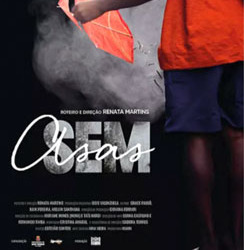
"Sem Asas", (20m), Dir: Renata Martins

"Sem Asas, or Wingless in its English translation, is a short film about a boy with a longtime interest in flying discovering he 'can'. I watched this movie because it was under the category 'black perspective' but I enjoyed it so much because it broke a lot of basic representation the media gives us.
The film mainly centers around the boy but also features his parents. I mention this because the movie really focuses on this family’s strong bond. That’s one thing media rarely gives movies, films, T.V, and etc that focuses on black representation. There’s always one parent (usually the dad) missing or dead and if both parents are there, the marriage is toxic and on the verge of breaking.
This family however is very close and from what the movie showed us very healthy. They help each other out when asked, joke around, lightheartedly tease each other, and were overall worried for each other. Another thing this film didn’t do that most media does was only make it about struggle.
I won’t lie the Black community does have a lot of struggles and situations it has to deal with but those things are usually the only thing media recognizes us for. While the representation of that is important, it starts to build an image in your head when that’s pretty much the ONLY time you see yourself and your community focused on in media.
Yes, there is black on black violence, broken family, major poverty, and many other things but that’s not all the black community is. I think Wingless did a good job of portraying this."-- K. Williams
View trailer here: https://m.youtube.com/watch?v=ZPkWmJvC-Tc
This for educational purposes and co-hosted by

Friedl's video introduction (created/produced by Sara Vianni) to enrolled students in the HUMA 121 course, "Latin American Art, Literature and Music".
youtube
3 notes
·
View notes
Photo







The Entangled Readers
by Lucie Draai and Zoe Scoglio, ongoing program
Entangled Readers is an ongoing study group organised, where we practice ways in which text and language might resonate with, and be digested by, the bodies present in the room. We approach reading as a collective, dialogical, and full body activity. By engaging sensorial methodologies with critical thinking we attempt to become receptive to the knowledge present on the page, under our skin and within the spaces between. We explore what tools and conditions might assist us to think through current political climates and open up space for alternative socialities and imaginaries to emerge.
The Entangled Readers is initiated by artists Zoë Scoglio and Lucie Draai, acting as a point of connection and opening up of their practices and research. Previous sessions have been held at Shimmer (Rotterdam), and Hot Wheels Projects (Athens) as part of the Dutch Art Institute and Van Abbemuseum COOP Academy. During this time a slow collective reading of Oswald de Andrade’s ‘The Manifesto Antropofago’ (The Cannibalist Manifesto) was undertaken, along with Denise Ferreira Da Silva’s text ‘On Difference Without Separability.’
https://www.luciedraai.nl/the-entangled-readers
0 notes
Link
Morte e vita delle ipotesi. Dell’equazione io parte del Cosmo all’assioma Cosmo parte dell’io. Sussistenza. Comoscenza. Antropofagia.
0 notes
Photo

"Manifesto Antropofago: Só me interessa o que não é meu." http://ift.tt/2wsjOnF
0 notes
Quote
Da equaçao 'eu parte do Kosmos' ao axioma 'Kosmos parte do eu.'
Oswald de Andrade, Manifiesto Antropófago
0 notes
Photo

Hoje, 17 de janeiro de 2013, assinala a passagem dos 40 anos sem Tarsila do Amaral. Na imagem (clique sobre para ampliar) facsímile da página da 1ª edição da 'Revista de Antropofagia' em que se lê os parágrafos iniciais do 'Manifesto Antropofago', escrito por Oswald de Andrade, e onde aparece pela primeira vez um desenho dando a ideia de um dos trabalhos mais reconhecidos da artista plástica brasileira: 'O Abaporu'. A edição é de maio de 1928.
#Revista de Antropofagia#modernismo brasileiro#Oswald de Andrade#Manifesto Antropofago#O Abaporu#Tarsila do Amaral
8 notes
·
View notes
Text
AA.VV. - Tropicália: ou Panis et Circencis
AA.VV. – Tropicália: ou Panis et Circencis
“Tupy or not Tupy: that is the question.” Il disco di cui raccontiamo oggi ha delle fondamenta antiche, gettate nel lontano 1924, quando Oswald de Andrade scrive il Manifesto da Poesia Pau-Brasil e anticipa di qualche mese la pubblicazione del Primo Manifesto del Surrealismo di André Breton, nel quale – da brasiliano – esprime il pieno appoggio delle avanguardie europee. Questo pensiero è…

View On WordPress
#1924#1928#1951#André Breton#Augusto de Campos#Baby#Bat Macumba#Beck#Brasile#Chico Buarque#Coração materno#David Byrne#Domenica delle Salme#Fabrizio De André#Gal Costa#Gilberto Gil#Hélio Oiticica#Jimi Hendrix#Lindoneia#Manifesto Antropofago#Mutations#Nara Leão#Os Mutantes#Oswald de Andrade#Panis Et Circencis#Parque Industrial#Pink Floyd#Rimbaud#Rita Lee#Rubens Gerchman
1 note
·
View note
Quote
Só a antropofagia nos une. Socialmente. Economicamente. Filosoficamente.
Oswald de Andrade, Manifesto Antropofago
28 notes
·
View notes
Text
Previous project in collaboration: The Entangled Readers
by Lucie Draai and Zoe Scoglio, ongoing program
Entangled Readers is an ongoing study group organised, where we practice ways in which text and language might resonate with, and be digested by, the bodies present in the room. We approach reading as a collective, dialogical, and full body activity. By engaging sensorial methodologies with critical thinking we attempt to become receptive to the knowledge present on the page, under our skin and within the spaces between. We explore what tools and conditions might assist us to think through current political climates and open up space for alternative socialities and imaginaries to emerge.
The Entangled Readers is initiated by artists Zoë Scoglio and Lucie Draai, acting as a point of connection and opening up of their practices and research. Previous sessions have been held at Shimmer (Rotterdam), and Hot Wheels Projects (Athens) as part of the Dutch Art Institute and Van Abbemuseum COOP Academy. During this time a slow collective reading of Oswald de Andrade’s ‘The Manifesto Antropofago’ (The Cannibalist Manifesto) was undertaken, along with Denise Ferreira Da Silva’s text ‘On Difference Without Separability.’
https://www.luciedraai.nl/the-entangled-readers
0 notes
Quote
Absorption of the sacred enemy. To transform him into a totem ....
Oswald de Andrade. - From "Manifesto Antropofago" [Cannibalist Manifesto, 1928]
5 notes
·
View notes
Photo

Manifesto antropófago - fonte.
23 notes
·
View notes